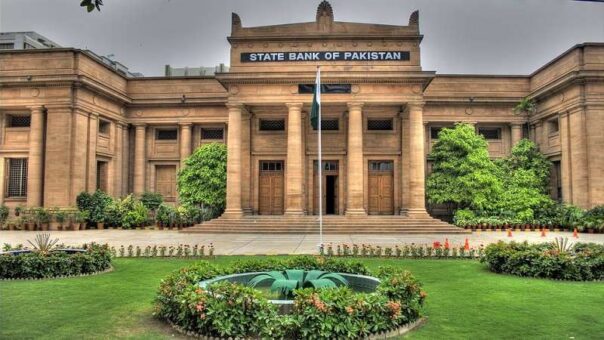Pakistan’s combined domestic and external debt has surged by 8.6% to reach Rs 66.08 trillion during the first ten months of the fiscal year 2023-24, according to the State Bank of Pakistan (SBP).
The SBP’s latest data indicates that by the end of April 2024, Pakistan’s total debt had risen to Rs 66.083 trillion, up from Rs 60.841 trillion in June 2023, marking an increase of Rs 5.242 trillion.
The significant rise in Pakistan’s debt stock over the July-April period of FY24 is primarily attributed to domestic debt, which saw a substantial increase of 14.6%, equivalent to Rs 5.671 trillion. The federal government’s domestic debt escalated to Rs 44.48 trillion by April 2024, compared to Rs 38.810 trillion in June 2023.
Breaking down the Pakistan’s domestic debt, long-term debt experienced a notable jump of 20%, reaching Rs 35.22 trillion by the end of April 2024, up from Rs 29.332 trillion in June 2023. This long-term debt includes Rs 32 trillion in permanent debt, Rs 2.79 trillion in unfunded debt, and Rs 373 billion in foreign currency loans.
Conversely, short-term Pakistan’s domestic debt saw a slight decline of 1.8%, decreasing to Rs 9.166 trillion by the end of April 2024.
In contrast to the rise in domestic debt, the federal government’s external debt showed a slight decrease of 2%, falling from Rs 22.031 trillion in June 2023 to Rs 21.602 trillion in April 2024. This external debt comprises Rs 21.499 trillion in long-term external debt and Rs 102 billion in short-term debt.
The exchange rate of the US dollar, which is a critical factor in external debt calculations, showed a minor decrease in the period under review. The Weighted Average Customer Exchange Rate for the dollar was Rs 286.3905 in June 2023, slightly reducing to Rs 278.3527 in April 2024.
Overall, while the domestic debt has been the primary driver of the increase in Pakistan’s total debt, the external debt has slightly decreased, reflecting nuanced economic movements and policy decisions within the given timeframe. The substantial rise in long-term domestic debt points to a strategy of extending debt maturities, whereas the reduction in short-term domestic debt and slight fall in external debt could indicate efforts to manage debt sustainability and foreign exchange risks.
